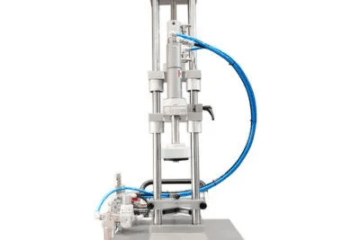What if doctors could detect a brain disorder before a single symptom appears? This is no longer science fiction—it’s a frontier being actively explored through advanced brain modeling. The integration of computational neuroscience and real-time patient data is making it possible to create a digital copy of an individual’s brain. The goal is to simulate neural functions so precisely that future conditions can be anticipated and even prevented.
This virtual replica, known as a Digital Twin Brain, is opening up new diagnostic pathways. By mirroring the brain’s behavior over time, researchers are uncovering subtle neurological shifts that may precede cognitive decline, seizures, or other abnormalities.
Understanding the Concept of a Digital Twin Brain
The idea of a digital twin originated in aerospace and manufacturing. Engineers used virtual models to test performance, predict failures, and improve maintenance schedules. Now, the healthcare industry is adapting this concept for one of the body’s most complex organs—the human brain.
A digital twin brain uses a combination of MRI scans, EEG data, genetics, and behavioral markers to create a dynamic, evolving simulation of a patient’s neurological state. Unlike static images, this twin updates in real time, allowing continuous comparisons between predicted and actual activity.
Neuroscientists feed the system large volumes of historical data to help it learn how various diseases develop. This enables the twin to flag anomalies or trends that deviate from healthy baselines. Over time, it becomes a predictive tool for early-stage diagnosis.
How a Digital Twin Differs From Traditional Imaging
Conventional brain scans like MRI or CT provide a snapshot of the brain at a single moment. While useful, they don’t show how the brain changes over time unless repeated at intervals. A digital twin, by contrast, is dynamic—it tracks, learns, and evolves as the patient does.
- Temporal Resolution
Traditional scans lack the resolution to capture fast, microsecond-level brain activity. Digital twin models integrate EEG data, which records neural signals in real time. This higher resolution helps detect functional changes that could precede structural damage. - Predictive Power
Imaging can confirm the presence of disease once symptoms arise. A digital twin can simulate disease progression and project timelines before symptoms surface. This allows for proactive intervention instead of reactive treatment. - Individualized Baselines
Instead of relying on population averages, a twin builds a unique baseline for each person. This makes anomaly detection more accurate and personalized.
Potential Disorders That May Be Predicted
The predictive potential of digital twin brains is being studied across several neurological and psychiatric conditions. Early research shows encouraging signs for disorders that typically take years to manifest:
- Epilepsy
By continuously simulating brainwave patterns, digital twins may identify pre-seizure neural behavior. This could allow physicians to predict seizure onset with greater precision and develop real-time warning systems. - Alzheimer’s Disease
Cognitive decline begins long before memory loss. A digital twin brain could detect the earliest neural deviations, such as reduced hippocampal activity or connectivity disruptions, enabling interventions that slow disease progression. - Autism Spectrum Disorders (ASD)
Children on the spectrum show atypical neural responses to stimuli. Digital twins trained on early behavioral and EEG data could detect patterns linked to ASD, offering earlier pathways for support and therapy. - Parkinson’s Disease
Before tremors and mobility issues begin, subtle changes occur in motor cortex activity and dopamine signaling. These can be modeled in a digital twin and flagged for neurological follow-up.
Benefits of Predictive Brain Modeling
The use of digital twins in neurology is still evolving, but several clinical advantages are already emerging:
- Non-Invasive Early Detection
Since digital twins are built on existing imaging and EEG data, there’s no need for risky or invasive procedures. Patients can be monitored with minimal disruption. - Improved Patient Stratification
Clinicians can use digital twin outputs to group patients based on risk, enabling better prioritization for diagnostic tests or clinical trials. - Treatment Simulation
Doctors may simulate how a patient’s brain would respond to different drugs, surgeries, or therapies—reducing trial and error during treatment planning. - Continuous Monitoring
Instead of periodic checkups, digital twins allow constant neurological surveillance. This is especially valuable for chronic disorders where symptoms can escalate suddenly.
Key Challenges in Developing a Digital Twin Brain
While the technology is promising, building and using digital twin brains is not without its obstacles:
- Data Volume and Quality
A digital twin requires massive amounts of accurate, high-resolution data across multiple modalities. EEG, MRI, genetics, and behavior all need to be synchronized and standardized—no easy task. - Interoperability Across Systems
Healthcare data is often siloed across institutions or formatted inconsistently. Creating a digital twin that pulls from multiple systems seamlessly remains a technical hurdle. - Computational Demands
Simulating a human brain, even partially, requires significant computing power. Real-time processing of EEG signals and high-fidelity simulations often demand cloud-based or edge-computing solutions. - Clinical Interpretation
Even when the twin flags a potential issue, clinicians need to understand the meaning behind the alert. AI explainability and transparency are essential for adoption. - Ethical and Privacy Concerns
A digital brain model contains highly sensitive personal data. Ensuring that it remains private, secure, and not misused for non-medical purposes is critical for ethical deployment.
What Success Looks Like in Real-World Applications
A few pioneering institutions are already piloting digital twin brain programs. Their success is defined by a few key indicators:
- Predictive Accuracy
The model must correctly flag upcoming events—like seizures or rapid degeneration—before they occur, with minimal false positives. - Integration with Clinical Workflows
Tools should fit into a doctor’s existing diagnostic process without adding complexity. Seamless dashboard alerts, auto-generated reports, and compatibility with EMRs make a big difference. - Patient-Specific Modeling
Generic models rarely perform well in clinical settings. Customization at the individual level, based on that person’s neurological history and lifestyle data, results in far better outcomes. - Cost Efficiency and Scalability
Institutions are looking for models that are not only accurate but scalable. If a system can handle hundreds of patients in parallel without overwhelming IT infrastructure, it becomes viable for wider use.
Future Outlook for Predictive Neuroscience
As digital twin technologies mature, the line between prediction and prevention will continue to blur. Several innovations could further enhance the clinical utility of digital twin brains:
- AI-Guided Behavioral Nudges
Based on brain model outputs, future systems might recommend lifestyle adjustments—such as sleep patterns or dietary changes—to reduce disorder risk. - Closed-Loop Neuromodulation
Digital twins could help calibrate neural implants or wearable neurostimulators in real time, personalizing treatment for conditions like epilepsy or depression. - Multimodal Diagnostics
By combining EEG, brain scans, speech analysis, and facial recognition, next-gen twin models could offer holistic views of neurological health, enabling even more accurate forecasting.
Conclusion
While still in its early phases, the Digital Twin Brain represents a leap forward in precision neurology. By mapping and monitoring an individual’s brain activity with computational accuracy, this technology offers the potential to diagnose disorders well before clinical symptoms arise. It’s not just about spotting problems—it’s about predicting them in time to change their course.
Clinical success, however, depends on integration, scalability, and trust. As these systems mature and become more accessible, they will increasingly be paired with technologies like eeg spike detection to enable round-the-clock monitoring, faster intervention, and safer patient care. The future of brain health may very well be shaped by its digital mirror.





